ROTORUA, March 29 — Just follow your nose and it will get you faster than any GPS can to Hell’s Gate, the most active geothermal park in Rotorua, New Zealand that earned its memorable moniker from George Bernard Shaw when he visited in the early 1900s. The Irish playwright was reportedly so enamoured by what he saw that he cast his atheism aside and labelled it as a portal to the netherworld. It does look as if the end is near; here, the depths of the earth bubbles to the surface in pools of boiling mud and spitting geysers while angry smoke rises from countless crevices and the biggest hot waterfall in the Southern Hemisphere cascades steamy liquid all day.

From miles away, you can detect the unmistakable smell of sulphur but interestingly, as one draws near, the assault on the olfactory is barely discernible. Perhaps its role is just to draw you to this ancestral home of the Ngati Rangiteaorere tribe, who have lived here for seven centuries and consider it sacred. Every geothermal element found here, named Tikitere in their language, can be explained by an ancient legend: The Hurutini Pool is where a Maori princess took her own life; Kakahi Falls was the open-air shower of wounded warriors returning from battle as the water was said to heal and purify, the high priest Te Unauhu, meanwhile, preferred to bathe in the Devil’s Bath as he believed it helped sharpened his futuristic vision.

Following in their ancestors’ footsteps, the Ngati folks embraced this as a healing and rejuvenation spot, and the tradition is upheld at Hell’s Spa located within the park. You sit in pools of steamy sulphurous water and slather your face and body in mud in the name of good health and silky, radiant skin. It’s one of many ways that the land provides for the people, who have let its volcanic features guide their culture and way of life.
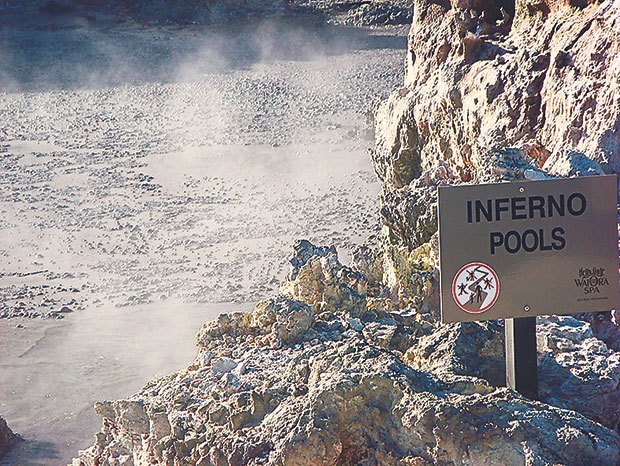
The hangi is another example of this intimate connection, a traditional cooking method that sees food being placed in baskets over hot stones or slow-burning wood and sitting in a shallow pit. Natural heat that rises from the ground helps create a steaming effect inside this ‘earth oven’, used to cook everything from meat to seafood and vegetables like kumara (sweet potatoes). No oil is used and in an authentic hangi meal, the flavours are kept pure, enhanced only by salt, pepper and fresh herbs.


At the family-run Maiti Maori Village, guests tuck into a hangi meal after watching a demonstration of the technique, both part of a daily presentation that was conceptualised to offer a glimpse into their rich heritage. The experience begins at dusk by the Wai-o-whiro stream that runs through the village, which is set in a lush forested area that’s also Rotorua’s only natural habitat for glow worms. Lit by a tiki lamp, a hand-carved waka or war canoe slowly glides along, ferrying Maiti ‘warriors’ who are clad in nothing more than the piupiu, a skirt woven from plant materials, and sporting tribal tattoos on their faces. Chanting an ancient war cry while lifting their short painted oars in a sleekly choreographed repertoire, the ‘warriors’ delivers a rousing welcome that’s true to tradition before taking to the stage to share stories of yore. Some of those are told through songs and dances, and of course, no Maori experience is complete without the raucous Haka, the traditional ancestral war dance.

While the Maiti invite you right into their home, Rotorua’s other main Maori attraction presents itself as a cultural centre. Your first lesson takes place at the entrance to Te Puia itself, where 12 carved totems lean forward in a circular huddle and support two sets of visual artworks that altogether, represent the universe and the celestial guardians who each watch over a different realm.
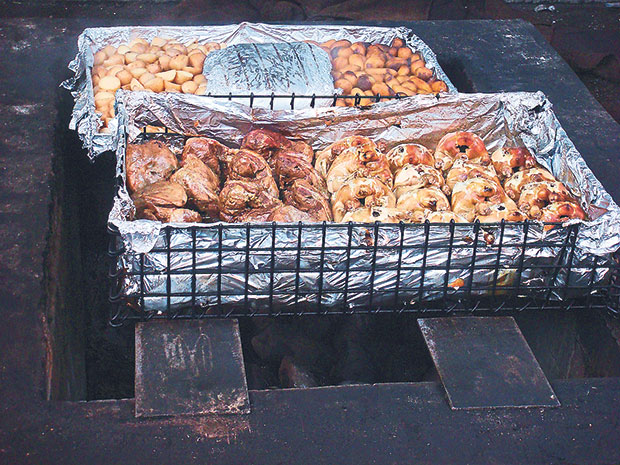
Step inside and follow the walking trail to observe flora that are significant to Maori culture. Observe the kiwi in a special live enclosure that’s fitted with reverse lighting to simulate the nocturnal environment in which these flightless birds thrive. More than just a well-loved symbol of the country, the diminutive wildlife is significant in Maori culture as a child of the forest god, Tane Mahuta.
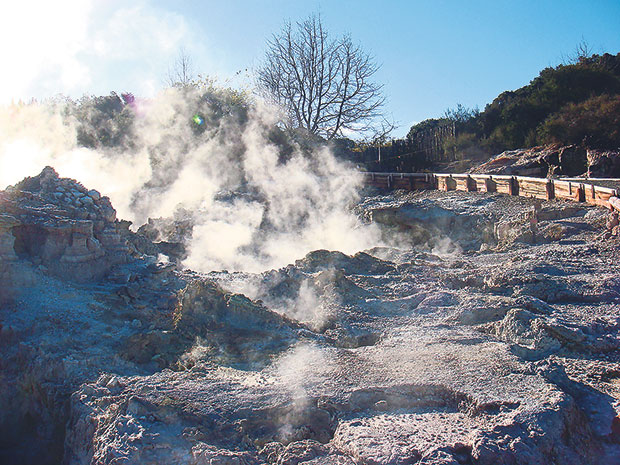
Te Puia is also home to the New Zealand Arts & Crafts institution, made up of several schools that are keeping ancient art forms such as bone carving, flax fibre weaving and waka building alive. The students put on demonstrations for visitors, who will also enjoy strolling through the Pikirangi village, modelled after a Maori settlement from pre-European times where buildings of wood are bedecked with elaborate carvings. The most striking of the lot is the meeting house, a focal point for villagers back in the day as it is for visitors today, hosting cultural showcases.
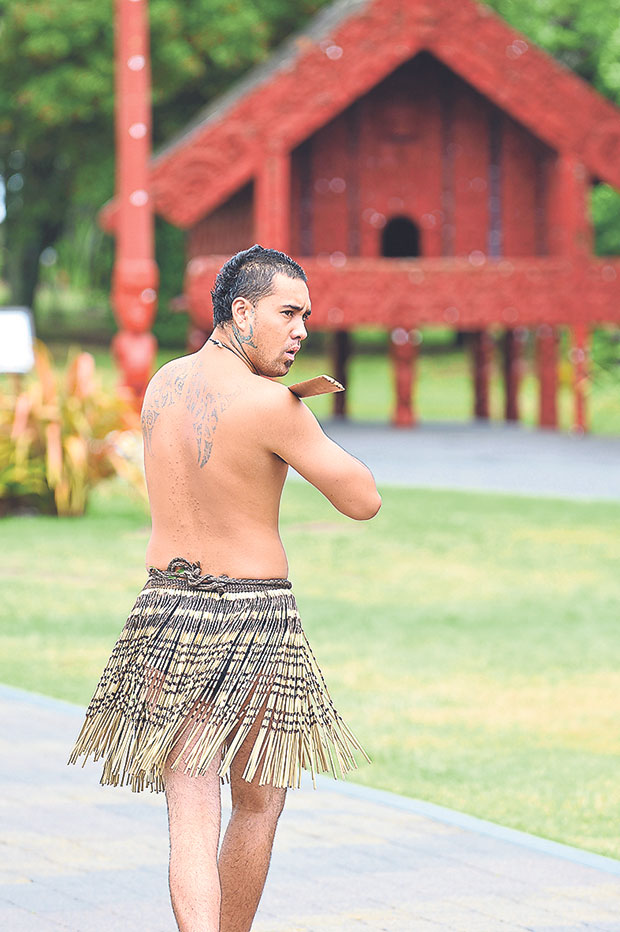
Te Puia’s natural surroundings is as blessed as its built environment is well planned, the valley within which it sits in is a playground for some 500 geothermal features. Most distinctive among them is the Pohutu Geyser, famous for reliably erupting up to 20 times a day and sending its powerful jets of water up to 30 metres into the oft-cloudless blue skies. Visitors wait for the regular occurrence along a wooden walkway that cuts through the valley and you’ll always know when the show is about to begin: Its neighbour, the smaller but no less impressive Te Tohu geyser (nicknamed Prince of Wales Feathers for it’s said to resemble the royal coat of arms) always leads the way, erupting just moments ahead. Their camaraderie can be traced to yet another Maori legend, which tells of the sisters and fire goddesses Te Pupu and Te Hoata, who travelled beneath the earth in search of their brother. Where the fire goddesses occasionally lifted their heads are now the various hotspots in the area, including these two landmarks.

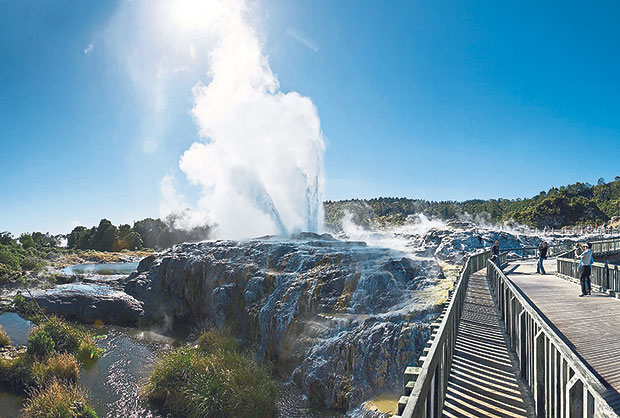
The fiery sisters’ legacy rages on for the enjoyment of those who find their way here and if it makes you long for another immersion in thermal heat, make your way to Polynesian Spa near the town centre, adjacent to Lake Rotorua. Take your pick from several outdoor pools that are filled with mineral-rich water channelled from hot springs in the vicinity. As the comforting heat replenishes your well-spent energy, it should also sink in that here in the heartland of the Maoris, the earth and its people are one. The land guides and governs the culture and lives of the people and they, in turn, protect and respect all that it offers.
Hell’s Gate
State Highway 30
Opens 8.30am-8.30pm
Maiti Maori Village
196 Fairy Springs Road
Showtime (September-April) 6.30pm-9.30pm; (April-September) 5.30pm-8.30pm; transfer is provided for guests staying in Rotorua
Te Puia
Hemo Road, Tihiotonga, Rotorua Central
Opens (late September-early April) 8am-6pm; (early April-late September) 8am-5pm; their Te Po evening experience is from 6pm-9pm year round
Polynesian Spa
Lakeside, 1000 Hinemoa Street
Opens 8am-11pm
Vivian Chong is a freelance writer-editor, and founder of travel & lifestyle website http://thisbunnyhops.com/






















